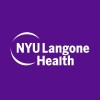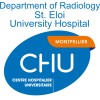
Le Kip Kip: A Campaign to Change Social Norms and Build Sustainable Demand for PrEP Among Women...
Pre-exposure ProphylaxisHIV InfectionsThe purpose of this study is to evaluate the impact of a social media campaign and community engagement activities to promote pre-exposure prophylaxis (PrEP) use among young women and to influence community norms around PrEP in South Africa. To do this, the investigative team will analyze PrEP initiation and retention data from the study's implementing partner, TB HIV Care, a non-profit organization providing PrEP to marginalized young women in South Africa. The effect of the social media campaign and community engagement will be tested using a short duration cluster randomized trial (CRT).

Adherence Connection for Counseling, Education, and Support (ACCESS) II
HIV InfectionsThe primary objective of the proposed clinical trial, Adherence Connection for Counseling, Education, and Support (ACCESS)-II, is to test the efficacy of ACCESS-II on antiretroviral treatment (ART) adherence and HIV-viral load in Black and Hispanic HIV-infected (HIV+) adolescents and young adults (AYA), ages 18-29 years (N=120) using a longitudinal (12 and 24 week outcomes), two-group, randomized control trial (RCT). Participants in the intervention condition will use videoconferencing to connect synchronously with trained HIV+ peer health coaches who will deliver eight weekly, 60-minute cognitive behavioral/motivational sessions for improved ART adherence. Participants in the control will connect asynchronously to a web-based HIV ART adherence education condition.

Testing Integrative Smoking Cessation for HIV Patients
SmokingSmoking Cessation1 moreThe purpose of this study is to examine the feasibility, acceptability and effect of a combined smoking cessation intervention integrating contingency management (reward-based) strategies with Mindfulness training to identify the optimal dynamic strategy to promote smoking cessation among HIV patients.

In Vivo Study of THC-induced Immune-genome Changes at Single Cell Solution in HIV-infected Humans...
HIV InfectionsHealthyIn this study, the investigators hypothesize that THC alters the immunogenome in a cell type-specific fashion and alters cytokine production via epigenetic regulatory mechanisms and that these alterations differ between HIV-infected and HIV-uninfected host genomes.

Biomedical HIV/AIDS Prevention Program Yunnan
HIV/AIDSB-HAPPY is an implementation project to study the process by which pre-exposure prophylaxis (PrEP) is introduced and integrated into a specific international health system facing high rates of HIV incidence among men who have sex with men. The study will use a stepped wedge design to compare implementation outcomes across eight municipalities in Yunnan, China.

Functional Interval Training for Veterans Exercising Through Telehealth.
HIV InfectionMost Veterans living with HIV are 50 years of age or older and can expect to live more than 20 years longer with HIV medication. However, despite this success, Veterans living with HIV are more likely to have age-related diseases and loss of fitness and muscle that place them at increased risk for disability. This is a major priority for the VHA, the largest provider of HIV care in the United States. The goal of this study is to test a circuit exercise program in Veterans living with HIV that is designed to slowdown the aging process. The exercise program will be widely available by Video Teleconferencing (VTEL) and does not require stationary exercise equipment, making it widely accessible. This research will help reach the goal for Veterans to preserve their quality of life and ability to function independently. Novel findings will strengthen strategies to maintain life-long fitness through a personalized exercise prescription.

Inflammation, NK Cells, Antisense Protein and Exosomes, and Correlation With Immune Response During...
HIV InfectionsMore than 90% of HIV-infected patients on antiretroviral therapy have an undetectable viral load. However, approximately 15% of these individuals do not sufficiently restore their TCD4 lymphocytes and have an unfavorable CD4/CD8 ratio despite good adherence and an undetectable viral load. Factors associated with immunovirological discordance include low CD4 cell counts prior to antiretroviral therapy, low CD4/CD8 ratios and positive cytomegalovirus (CMV) serology. These patients are at risk of significant non-AIDS events and mortality. The anti-sense protein (ASP) is synthesized from the anti-sense strand of HIV-1. A cytotoxic anti-ASP response of CD8 T lymphocytes and anti-ASP antibodies have been demonstrated in infected patients. The conservation of the ASP gene in HIV-1, the virus responsible for the pandemic, suggests that its maintenance confers an advantage to the virus. ASP induces an inflammatory phenotype in surrounding cells. ASP can be externalized by the cell through its interaction with its cellular partner Bat-3. Once externalized in soluble or exosomal form, Bat-3 has the ability to regulate NK cell activity. During HIV infection, NK functions are disrupted, including those related to the expression of the Bat-3 receptor, NKp30. In patients, the inflammatory phenomenon is strongly associated with chronic HIV-1 infection. The efficacy of antiviral treatments does not allow a complete normalization of either the immune system function or the inflammatory status of the patient. The observed effect of ASP on inflammation raises the question of the involvement of ASP in the maintenance of a chronic inflammatory state in patients under treatment. Increased inflammation has also been associated in HIV-infected patients with elevated plasma exosome levels. In patients undergoing treatment, chronic inflammation remains a major problem and an important source of comorbidities (cardiovascular in particular) and probably contributes to the immunovirological non-response in immunodiscordant HIV-infected patients. It is hypothesized that ASP bound to its cellular partner Bat-3 in exosomes would disrupt the cytotoxic activity of NK cells, sustain inflammation and have a deleterious effect on immune reconstitution.

PeerNaija: A Mobile Health Platform Incentivizing Medication Adherence Among Youth Living With HIV...
HIV/AIDSThe PEERNaija application will feature routine medication reminders, along with individual adherence monitoring with adherence scores, anonymized peer adherence scores (from peers attending the same clinic; social incentive), and a monthly lottery-based prize for youth with the highest adherence scores (financial incentive). The Investigators will recruit a cohort of 50 HIV-infected adolescents and young adults (AYA) to pilot the app and assess feasibility, acceptability, adoption, and preliminary efficacy of important clinical measures (including adherence and virologic suppression). The proposed study will provide important preliminary data for the role of mobile health (mHealth) platforms to harness and deliver social and financial incentives to promote adherence efforts, especially for vulnerable youth, and for a larger intervention trial evaluating this app among HIV-infected AYA in Nigeria.

PositiveLinks: mHealth for DC Cohort
HIV/AIDSTo achieve the end of the HIV epidemic, concerted efforts will be needed to address the HIV care continuum, including improving retention in care (RIC) and viral suppression (VS) among persons with HIV (PWH). In the U.S., less than 50% of PWH are RIC and even fewer are VS. Studies have shown that these PWH have poorer clinical outcomes and are at risk of transmitting HIV to others, hence the need for innovative solutions to improve retention in care and subsequent viral suppression. Theory-based mHealth interventions have been shown to be promising in reaching these at-risk groups and improving HIV-related outcomes. PositiveLinks is a clinic-deployed mHealth platform that includes patient and provider smartphone apps, a web portal for clinic staff and providers to manage patient cohorts, an online implementation guide, and a learning management system to train and certify clinic staff. It has theory-based features including daily queries of adherence, mood, and stress, graphical feedback for self-monitoring, secure messaging with staff, appointment reminders, anonymized peer support, information resources, and document upload capability to support insurance re-enrollment. A 12-month prospective study in poorly retained PWH found that PL increased RIC and VS, with app use related to benefit as well as improved social support and stigma. PL is a promising existing mHealth tool for PWH, yet its efficacy has not been tested in a randomized trial, nor in urban populations. The investigators will test the efficacy of PositiveLinks to improve RIC and VS among a cohort of PWH in a high HIV prevalence city of Washington, DC. Participants will be identified from the DC Cohort, a longitudinal prospective cohort of PWH receiving HIV care at 15 clinics in DC. First, the investigators will conduct formative research to assess the feasibility, acceptability and usability of PositiveLinks among this urban cohort and conduct subsequent adaptations based on these findings. The investigators will then conduct an efficacy study through a cluster randomized controlled trial at 12 DC Cohort sites among 482 PWH. Clinics will be randomized to PL or usual care. Primary outcomes will include VS, RIC, and visit constancy at 12 months. Finally, the investigators will conduct mixed methods implementation science research guided by the Consolidated Framework for Implementation Research and RE-AIM to identify site, patient, provider, and system factors that characterize best practices in program implementation. If successful, this research will lead to the development of a novel and efficacious approach to improving RIC and VS among PWH which could lead to dissemination research that will contribute to HIV epidemic control. This project is responsive to NIH priorities, National HIV/AIDS Strategy, and Ending the HIV Epidemic goals as it is cross-cutting, seeks to reduce health inequities, and to improve health outcomes to achieve sustained viral suppression in a geographic hotspot for HIV.

Closing -TB GAPs - for People Living With HIV: TB Guidance for Adaptable Patient-Centered Service...
TuberculosisHIV Coinfection1 moreTuberculosis (TB) is the world's leading infectious cause of mortality and responsible for 1/3 of deaths in people living with human immunodeficiency virus (PLHIV). Children and adolescents living with HIV (CALHIV) are disproportionately affected due to inadequate preventive services, large case detection gaps, treatment and adherence challenges, and knowledge gaps. This project will generate evidence to inform interventions targeting several of these weaknesses in the TB/HIV cascade of care. Early detection and treatment of TB improve outcomes in people living with HIV (PLHIV). A key challenge in the detection of HIV-associated TB has been the implementation of screening that identifies the correct population for diagnostic testing. Increasing evidence demonstrates the poor performance of recommended symptom screens and diagnostic approaches. Hence, the investigators aim to define a more accurate TB screening and testing strategy among PLHIV (Objective 1 and Objective 2). TB preventive treatment (TPT) averts HIV-associated TB. Nevertheless, among PLHIV, TPT initiation and completion rates are sub-optimal and effective delivery strategies are not defined. As such, the investigators aim to identify the most effective TPT delivery strategy through shared decision making and by integrating approaches proven to be effective at improving HIV treatment adherence (Objective 3). Although evidence demonstrates that isoniazid preventive therapy (IPT) is cost-effective in young children living in TB/HIV high burden settings, the cost-effectiveness of newer short-course TPT has primarily been studied in the context of a TB low-burden, high-income setting. The investigators aim to generate evidence to fill this knowledge gap and inform policy for PLHIV living in TB/HIV high burden settings (Objective 4). This study is supported by the Centers for Disease Control and Prevention of the U.S. Department of Health and Human Services (HHS) as part of a financial assistance award totaling an anticipated $5,000,000 over five years with 100 percent funded by CDC/HHS.
